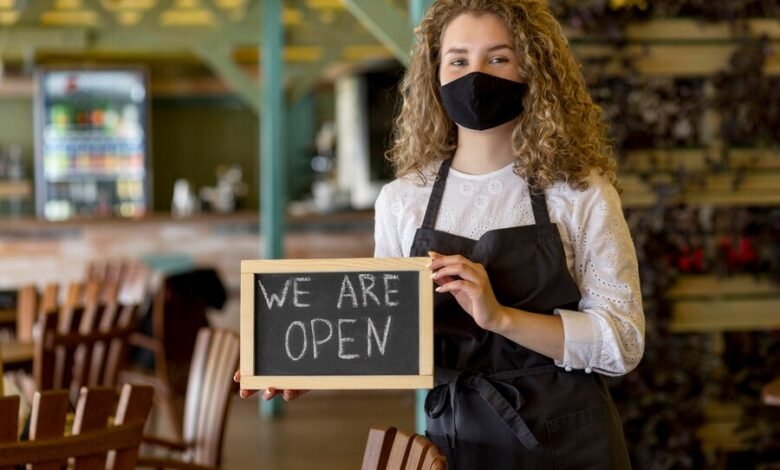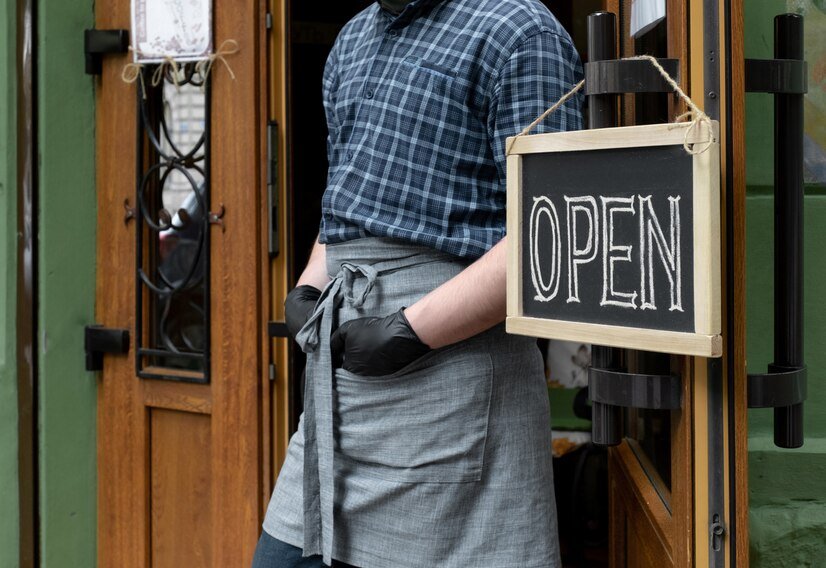Which Outback Steakhouses Are Closing? A Look at the Latest Updates and What It Means for the Brand

Outback Steakhouse is an iconic restaurant chain known for its signature Australian-inspired menu, hearty steaks, and casual dining experience. For years, the restaurant has been a favorite for those craving a delicious meal and a laid-back atmosphere. However, like many other businesses in the restaurant industry, Outback Steakhouse has faced significant challenges in recent years, leading to the closure of several locations. So, which Outback Steakhouses are closing? And what does this mean for the brand’s future?
In this article, we’ll explore the factors influencing these closures, the impact on the brand, and what diners can expect moving forward. We’ll also dive into how Outback Steakhouse has adapted to the changing landscape of the restaurant industry, particularly in the wake of the COVID-19 pandemic and the evolving consumer trends.
The Rise and Popularity of Outback Steakhouse
Before we dive into the closures, it’s important to take a look back at Outback Steakhouse’s success. Founded in 1988 by Chris and Bob Basham, Tim Gannon, and Trudy Cooper, Outback quickly became a popular destination for people seeking a relaxed, enjoyable dining experience. The restaurant’s menu featured an array of mouthwatering steaks, chicken, seafood, and iconic appetizers such as the Bloomin’ Onion. Its signature dishes and unique Australian theme set it apart from other steakhouses, and it didn’t take long for the chain to grow rapidly across the United States and internationally.
By the 1990s, Outback had expanded to hundreds of locations, becoming one of the most recognized brands in the casual dining sector. The brand’s success can be attributed to its focus on high-quality food, friendly service, and a distinctive dining experience that catered to a broad demographic.
However, as the restaurant industry has evolved, Outback Steakhouse has not been immune to the pressures faced by many chains in recent years.
Factors Leading to the Closures of Outback Steakhouses
The question of which Outback Steakhouses are closing stems from several complex factors, all of which have affected the broader restaurant industry. These factors include changes in consumer behavior, increased competition, and economic pressures that have affected many businesses, especially those in the dining sector. Let’s explore some of the key reasons behind the closures.
1. The Impact of the COVID-19 Pandemic
The COVID-19 pandemic had a devastating impact on the entire restaurant industry. For months, restaurants were forced to close their dining rooms and shift to delivery and takeout models, drastically altering how customers interacted with their favorite eateries. Outback Steakhouse was no exception, as it had to navigate local restrictions, health guidelines, and a massive reduction in foot traffic.
Even as restrictions eased, many people remained hesitant about dining out due to health concerns, which led to a significant dip in sales. For some locations, the combination of decreased sales and higher operational costs made it impossible to remain profitable. Although Outback Steakhouse was able to pivot with robust delivery and takeout options, the overall downturn in restaurant traffic still left some locations unable to sustain their operations.
2. Changing Consumer Preferences
In addition to the pandemic, changing consumer preferences have also contributed to the closures of Outback Steakhouses. With the rise of fast-casual dining, food delivery apps, and an increased focus on healthier eating, many diners have shifted away from traditional sit-down steakhouses in favor of more convenient and diverse dining options. This shift has been particularly noticeable among younger generations, who value convenience, health-conscious menus, and sustainability.
Outback Steakhouse, known for its hearty portions and indulgent menu items like steak and Bloomin’ Onions, has struggled to align with the growing demand for lighter, more health-conscious meals. As a result, some locations that couldn’t adapt quickly enough have had to close their doors.
3. Economic Pressures and Rising Operational Costs
The cost of doing business has been steadily rising for many restaurants, including Outback Steakhouse. Labor shortages, higher wages, food price inflation, and increased overhead costs have made it challenging for some locations to remain profitable. Although Outback Steakhouse is part of Bloomin’ Brands, a large corporate entity with multiple restaurant brands under its umbrella, not all locations have been able to keep up with rising expenses.
For some franchises, particularly those in lower-traffic areas or smaller markets, these financial pressures have made it difficult to sustain operations. In these instances, closures may be necessary to preserve the financial health of the brand as a whole.
Which Outback Steakhouses Are Closing?
As of recent reports, several Outback Steakhouse locations across the United States and internationally have been closed or are in the process of closing. While the company has not publicly released a comprehensive list of closures, there are some notable trends and locations affected by the closures:
1. Locations in Smaller Markets
Outback Steakhouse has historically been successful in suburban areas, but smaller markets with lower population density or decreased foot traffic have been hit hard by the shifting dining trends. Locations in towns with fewer dining options may have seen a decline in customer demand, making it difficult to sustain operations. As a result, Outback has opted to close some of these less profitable stores.
2. High-Rent Urban Locations
Another area where closures have been more prominent is high-rent urban locations. Cities with high real estate costs and competitive restaurant environments can be tough for traditional sit-down restaurants like Outback. While the brand is known for its affordability, the increasing cost of real estate and labor in urban centers has created challenges for some locations.
3. International Locations
Outback Steakhouse has a significant international presence, but the closures have not been limited to the United States. Several international locations, particularly in markets that have seen a shift in dining preferences or economic instability, have also shut their doors. Some of these closures may be linked to broader regional economic conditions, changes in consumer behavior, or local competition.
4. Franchise Closures
Outback Steakhouse has a significant number of franchise-operated locations, and some franchise owners have made the decision to close their restaurants due to the pressures mentioned earlier. Franchise locations may face even higher operational costs, which can lead to closures if the franchisees are unable to maintain profitability.
How Has Outback Steakhouse Responded to the Closures?
While it is unfortunate for the employees and loyal customers of these locations, Outback Steakhouse has been working to strengthen its brand in other ways. The closures of some stores are seen as part of a broader effort to streamline operations and focus on more profitable markets.
1. Expanding Delivery and Takeout Services
One of the key strategies Outback Steakhouse has employed to adapt to changing consumer habits is expanding its delivery and takeout services. In response to the pandemic and the growing demand for convenience, Outback has heavily invested in digital platforms, allowing customers to place orders online for delivery or pickup. This has enabled the brand to maintain its presence even when in-person dining was not an option.
2. Menu Innovation and Health-Conscious Options
Recognizing the growing demand for healthier menu items, Outback has also made efforts to update its menu and incorporate healthier options. The brand has introduced lighter meals, such as grilled chicken and seafood dishes, and has made a conscious effort to reduce the calorie counts in many of its traditional dishes. This move aims to appeal to the health-conscious consumer who may have once steered clear of a steakhouse meal.
3. Remodeling and Refocusing on Core Locations
Rather than expanding into more new markets, Outback Steakhouse is focusing on remodeling existing locations and strengthening its core restaurants. The company has also concentrated on regions where there is a strong, loyal customer base, ensuring that the closures of certain locations will help the brand thrive in more profitable and strategic areas.

What Does the Future Hold for Outback Steakhouse?
Despite the closures, Outback Steakhouse remains a strong player in the casual dining sector. The brand’s ability to adapt to modern dining preferences, coupled with its continued focus on quality food and customer satisfaction, ensures its relevance in an ever-changing restaurant landscape.
The closures that have occurred so far are not indicative of the brand’s overall decline but rather part of a necessary adjustment period. Outback Steakhouse is strategically repositioning itself, focusing on profitable locations and staying attuned to customer needs. As long as the brand continues to evolve with the times and maintains its loyal customer base, it is likely to remain a staple in the restaurant industry for years to come.
Conclusion: The Changing Landscape of Outback Steakhouse
So, which Outback Steakhouses are closing? While specific locations may vary, closures are a part of the larger trend of adaptation that many restaurant chains, including Outback, are undergoing in response to changing consumer preferences and economic challenges. However, Outback Steakhouse’s ability to innovate and refocus on core strengths positions it for continued success in the future. With the right adjustments, the brand can weather these challenges and continue to provide the quality dining experience that made it a household name in the first place.





